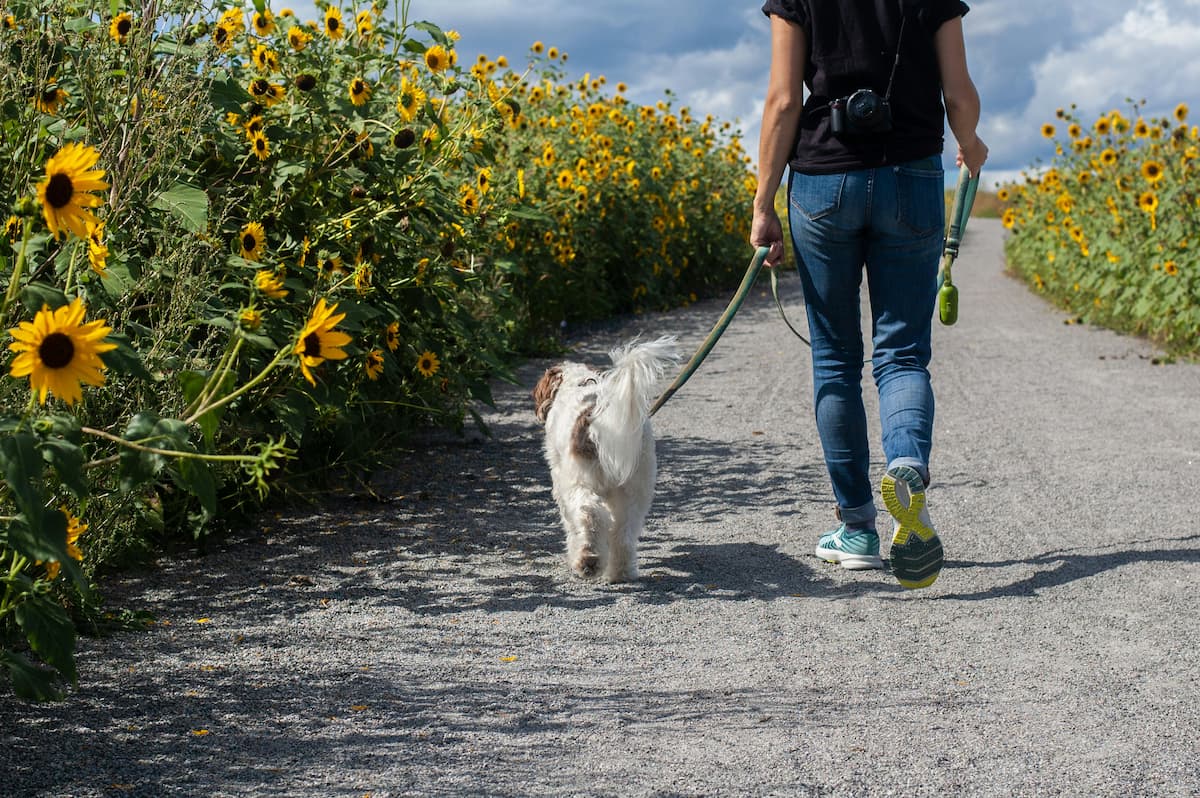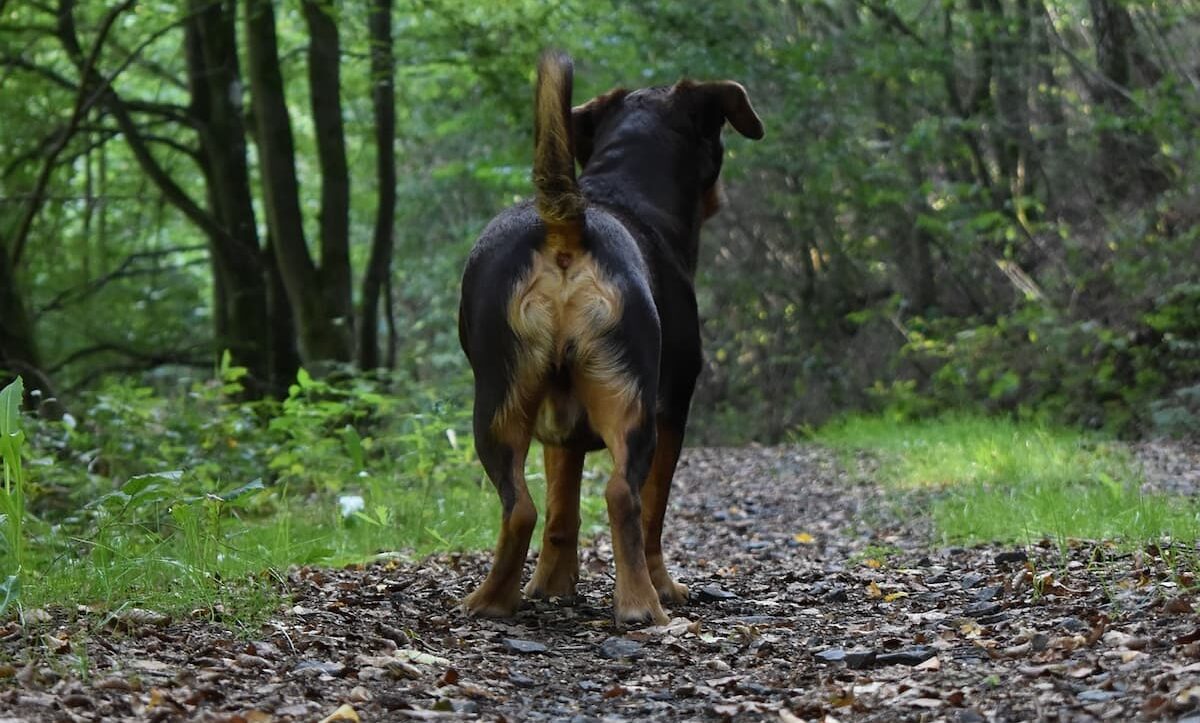Have you ever looked at your furry best friend and wondered why their back legs suddenly stopped working?
It’s a heart-wrenching sight to witness your dog struggling to move around when they were once full of energy and agility.
As pet owners, we often find ourselves desperately searching for answers and potential solutions to help our beloved four-legged companions regain their mobility.
This article will answer the question: Why do dog’s back legs stop working?
Understanding the Common Causes of Hind Leg Weakness in Dogs
It can be heartbreaking to watch our furry companions struggle with hind leg weakness.
As responsible pet owners, it’s important for us to understand the common causes behind this condition so that we can provide the best care and support for our dogs.
First, here are a few telltale signs that your dog’s back legs may be giving them trouble:
- Difficulty getting up or standing: If you notice your dog struggling or hesitating when attempting to rise from a lying or sitting position, it could be an indication of a problem.
- Unsteady gait or loss of coordination: When your dog’s back legs suddenly become weak or wobbly, resulting in stumbling or frequent falls, it’s a sign that something isn’t right.
- Dragging or knuckling of paws: If your dog starts dragging their back legs or their paws begin to fold under, causing them to walk on their knuckles rather than their pads, there may be an underlying issue.
Now that you understand the signs, here are some potential causes of hind leg weakness in dogs:
Injury and Trauma
One potential cause of hind leg weakness in dogs is injury.
Just like humans, our canine friends can experience traumatic injuries, such as fractures or nerve damage, which in turns results in the loss of mobility in a dog’s hind legs.
Depending on the severity of the injury, surgical intervention may be necessary to repair bones or reconnect damaged nerves.
Degenerative Diseases
Another possible cause of hind leg weakness is degenerative joint disease or osteoarthritis.
This condition is more commonly seen in older dogs, but it can also affect younger ones.
Osteoarthritis occurs when the cartilage protecting the joints wears down over time, leading to pain, inflammation, and limited mobility.
Keeping an eye out for signs such as reluctant movement, stiffness, or favoring one leg over the other can help you identify if your dog is suffering from this condition.
Neurological Disorders
Additionally, certain neurological disorders can contribute to hind leg weakness in dogs.
One such neurological disorder that can cause hind leg weakness in dogs is intervertebral disc disease (IVDD), a condition where the discs between the vertebrae in a dog’s spine degenerate or become herniated.
This can put pressure on the spinal cord, leading to weakness or even paralysis in the hind legs.
Another possible reason for hind leg weakness in dogs is a condition called degenerative myelopathy (DM).
DM is a progressive disease that affects the spinal cord and nervous system.
While the exact cause is still unknown, it is believed to have a genetic component.
As the disease progresses, dogs may experience difficulty walking, knuckling of the paws, and loss of balance.
Rehabilitation techniques for dogs with DM aim to slow down the progression of the disease and maintain their quality of life.
This can include physical therapy exercises, assistive devices like harnesses or wheelchairs, and a modified living environment to prevent falls and injuries.
Remember, if your dog is experiencing hind leg weakness, it’s crucial to seek professional veterinary advice.
Early detection and proper treatment are key to ensuring your four-legged friend’s well-being and improving their quality of life.
With the right care, support, and understanding of the common causes behind this condition, we can help our beloved dogs regain their mobility and enjoy a happy, active lifestyle!
Rehabilitation Techniques to Help Restore Strength
Fortunately, there are steps you can take to help your furry friend regain some mobility and live a more comfortable life.
First and foremost, it’s crucial to consult a veterinarian to get a proper diagnosis and discuss treatment options.
Early detection and intervention can significantly improve the chances of recovery or preventing further deterioration.
Depending on the specific condition, your vet may recommend medications to manage pain and inflammation.
Physical therapy and rehabilitation exercises can also be beneficial, as they help to strengthen muscles, improve flexibility, and enhance overall mobility.
In some cases, surgical intervention or medications to alleviate inflammation and pain may be necessary.
Post-surgery, rehabilitation techniques can include pain management, range of motion exercises, and physical therapy to regain strength and coordination.
Additionally, assistive devices like leg braces or carts may be used to support the dog’s hind legs and aid in their rehabilitation process.
Tips and Strategies for Supporting your Dog’s Hind Leg Health
Maintaining our furry friends’ mobility is crucial for their overall well-being.
Here are some valuable tips and strategies that can help you support your dog’s hind leg health and ensure they can continue to live an active and joyful life.
First and foremost, it’s important to provide your dog with regular exercise that targets their hind legs.
This will help to strengthen the muscles and joints, improving their mobility and reducing the risk of hip dysplasia or other common hind leg problems.
Activities like walking, swimming, or even gentle play sessions can work wonders for their leg health.
Remember to start slow and gradually increase the intensity to avoid putting too much strain on their joints.
Also consider that your dog’s weight plays a key role in maintaining their hind leg health.
Obesity can put excessive pressure on their joints, leading to discomfort and limited mobility.
To prevent this, ensure your dog follows a balanced diet by feeding them a nutritious and portion-controlled meal plan.
You can consult with your veterinarian to determine the appropriate amount and type of food for your dog’s specific needs.
Incorporating joint supplements into your dog’s wellness routine can also provide significant support for their hind leg health.
Omega-3 fatty acids, glucosamine, and chondroitin are commonly recommended to promote joint lubrication and reduce inflammation.
These supplements can be easily found in most pet stores and are available in various forms, such as chewable tablets or liquid additives that can be mixed with their food.
Additionally, making some lifestyle changes can make a big difference.
Providing your dog with a comfortable orthopedic bed can help alleviate pressure on their joints while they sleep.
It’s also important to make modifications to their living environment to minimize the risk of falls and accidents.
Install ramps or stairs to help them navigate areas with elevation changes and consider using non-slip surfaces to prevent slips and falls.
Finally, maintaining a healthy weight through proper diet and regular exercise is essential, as excessive weight puts extra strain on the joints.
Remember, your furry companion relies on you to ensure their mobility and overall well-being.
By implementing these tips and strategies, you can support your dog’s hind leg health and strengthen their bond with you through many active and adventurous years ahead.
FAQ
Q: What causes hind-end weakness in dogs?
A: Well, there can be various causes behind this unfortunate condition.
One common culprit is degenerative myelopathy, which is like a dog version of multiple sclerosis.
It affects the spinal cord and can gradually lead to a loss of coordination and paralysis in the hind legs
Another possible cause is intervertebral disc disease, where the discs between the spine’s vertebrae can slip or rupture, putting pressure on the spinal cord and affecting mobility.
Some other conditions that can contribute to hind-end weakness include spinal cord tumors, infections, arthritis, and injury.
Q: How can I tell if my dog is experiencing hind-end weakness?
A: Keep an eye out for certain signs.
If your dog is dragging their back legs, stumbling, or struggling to get up, it might be a red flag.
You may also notice your furry friend having difficulty climbing stairs, showing a lack of coordination, or favoring one leg over the other.
Q: Is hind-end weakness treatable?
A: While complete recovery may not always be possible, there are often treatment options available to help manage the condition and improve your dog’s quality of life.
It’s crucial to consult a veterinarian if you suspect your dog is experiencing hind-end weakness.
Depending on the underlying cause, treatments may range from medication and physical therapy to surgery or mobility aids like wheelchairs.
Q: Can hind-end weakness be prevented?
A: Some causes of hind-end weakness, such as genetic conditions, may not be preventable.
However, there are steps you can take to minimize the risk.
Keeping your dog at a healthy weight through exercise and proper nutrition can help reduce stress on their joints and spine.
Regular vet check-ups and screening tests may also aid in early detection of potential issues.
Q: How can I care for my dog with hind-end weakness?
A: First and foremost, your pup will need your love and support!
Make sure to provide a safe and comfortable environment with nonslip surfaces to prevent accidents.
Assistive devices like ramps or slings can help make mobility easier for your furry friend.
Additionally, feeding a balanced diet, maintaining a regular exercise routine (as advised by your vet), and following any prescribed treatments or therapies will help keep your loyal companion as happy and healthy as possible.
Remember, if you notice any changes or concerns about your dog’s hind-end strength or mobility, don’t hesitate to reach out to a veterinarian.
They can guide you through the process of understanding the Clos
And that, my friends, concludes our exploration into the peculiar phenomenon of a dog’s back legs suddenly giving out.
We dove into the possible causes behind this mysterious occurrence, learning that it can range from injuries, degenerative diseases, to underlying health conditions.
Remember, our four-legged companions have their unique struggles just like humans do.
Reflecting on the Closing Chapter
So, next time you witness your furry friend experiencing weakness or paralysis in their hind legs, it’s crucial not to panic, but to be proactive.
Reach out to your veterinarian without delay and provide them with a thorough description of the symptoms.
With their expertise, they can pinpoint the exact cause and suggest the appropriate course of action.
Until then, let’s ensure our canine companions are living their happiest and healthiest lives.
Regular exercise, a balanced diet, and routine vet check-ups can go a long way in preventing such sudden leg issues.
After all, our beloved dogs rely on us to care for them and give them the life they deserve.
Remember, it’s our duty to be there for our furry friends through thick and thin.
Their endless love and loyalty deserve nothing less than our unwavering support and attention.
So, next time you catch your dog wagging their tail, just remember the immense joy they bring into our lives.
Cherish those moments and be their forever advocate.














